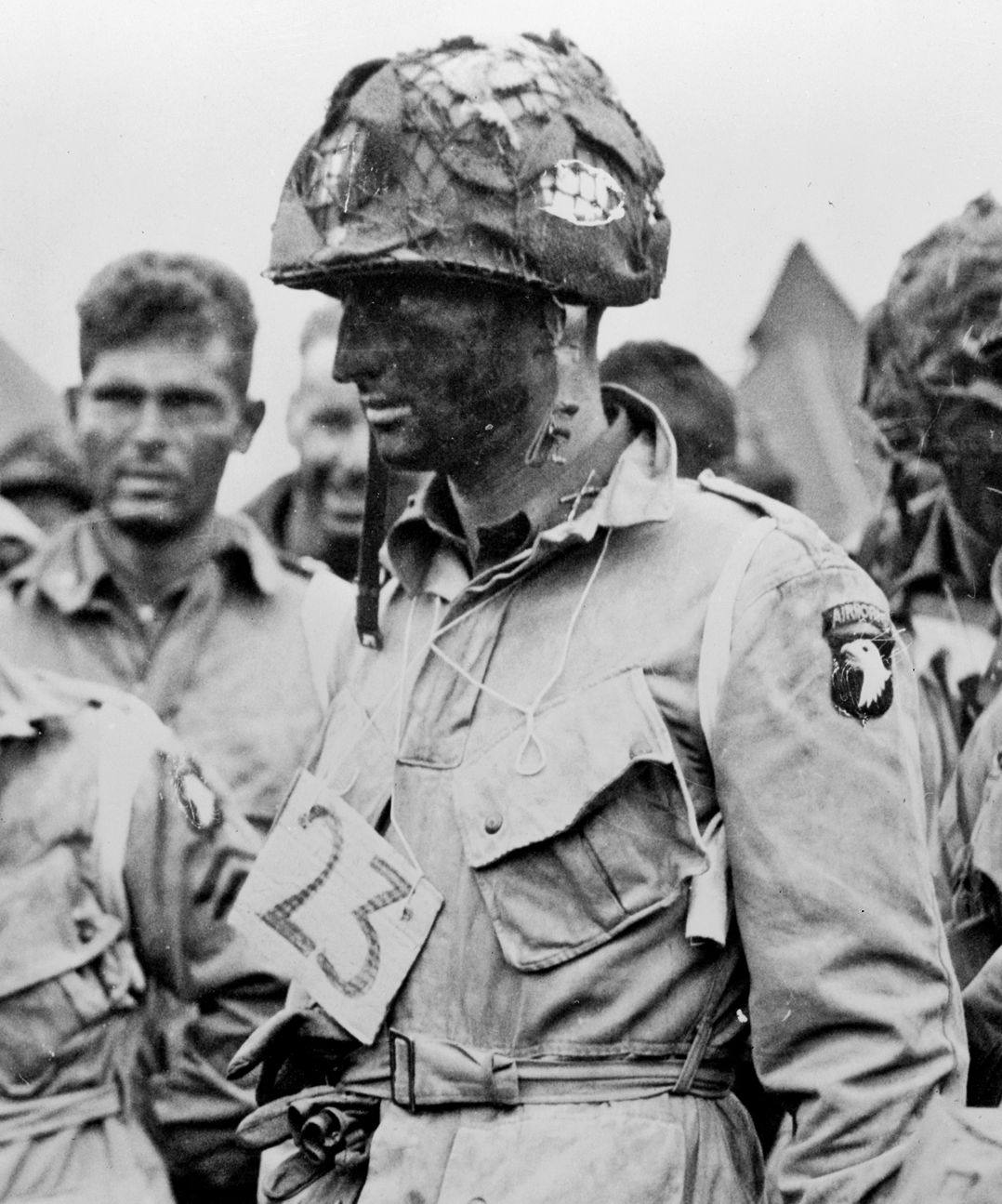Authors:
Historic Era: Era 8: The Great Depression and World War II (1929-1945)
Historic Theme:
Subject:
April 1990 | Volume 41, Issue 3


Authors:
Historic Era: Era 8: The Great Depression and World War II (1929-1945)
Historic Theme:
Subject:
April 1990 | Volume 41, Issue 3
The photograph has been printed and reprinted far and wide. It is found in school books, history books, and encyclopedias. It is on display at the Pentagon.
It is, of course, the photograph of General Dwight D. Eisenhower taken the evening before D-day, June 6, 1944, speaking to the men of the 101st Airborne Division. The caption always reads that he is urging his paratroopers “on to total victory.” But, to this day, what really occurred and what was really said is still known only to the men with whom he was talking.
The troops had been moved into the marshaling area at Greenham Common airfield in Berkshire country, about an hour west of London, during the latter part of May and had been fully briefed with aerial photos and sandbox mockups on the coming invasion of Normandy. Restricted to the area now that sensitive information had been passed along, the men had little to do other than check their equipment and go over the plans and their final objectives.
The “go” came on the evening of June 5, 1944 after an entire day’s delay due to weather. Everyone was more than ready, in full battle gear. It was rumored that Ike was in the area, yet the men’s reaction was surprisingly calm. Until it was added, “But you ought to see his driver—a woman!”

There was a wild dash down the temporary street between the tents to see the driver of Ike’s car, Kay Summersby. As the men ran down the street, who should be heading up the same road but Ike and his group of officers and photographers? When the two groups converged, correct military courtesy prevailed, the parachutists standing at attention and Ike coming over to greet his men.
His words were not “total victory,” as might be expected before one of the war’s greatest battles, and as one might assume from his posture and expression, but, rather, “What’s your name, lieutenant,” and “Where are you from?”
“Strobel” and “Michigan, sir,” were the replies. Ike recalled in some detail the spectacular fishing he had enjoyed there. Then, quickly, he moved on, the photographers having captured the exchange on film.
The troopers’ brief delay was over and they continued on to see Ike’s car and its beautiful chauffeur. Then, a few minutes later, the troopers boarded planes, and, just hours later, they were parachuting behind the beaches of Normandy.
In the turmoil to come, the incident was